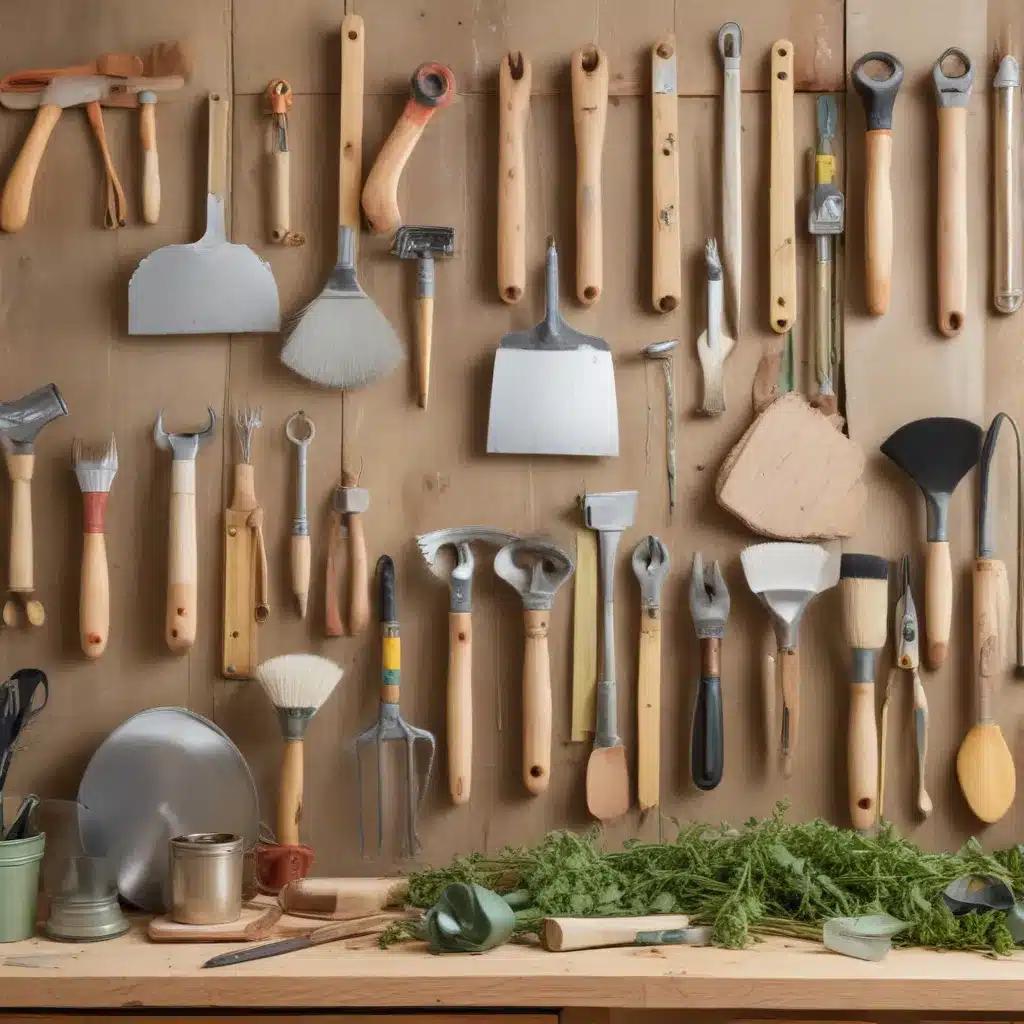
Sustainable Renovation Tools: Eco-Friendly Options for the Planet
As an experienced home improvement consultant, I’ve seen firsthand how eco-conscious renovations can transform a space – both for the environment and the homeowner. Whether you’re looking to reduce your carbon footprint, save money on utility bills, or create a healthier living environment for your family, there are plenty of sustainable tools and materials to consider.
In this comprehensive guide, we’ll explore a diverse range of eco-friendly building materials, energy-efficient equipment, water conservation strategies, waste reduction techniques, sustainable power options, and innovative insulation choices – all with the goal of helping you plan a renovation that’s kinder to the planet.
Eco-Friendly Building Materials
When it comes to renovation projects, the materials you choose can have a significant impact on the environment. Opting for renewable resources, recycled and reclaimed materials, and non-toxic finishes can go a long way in minimizing your carbon footprint and creating a healthier indoor space.
Renewable Resources: Materials like bamboo, cork, and reclaimed wood are excellent choices for flooring, cabinetry, and trim work. These fast-growing, naturally replenishing resources are not only visually appealing but also highly durable and low-maintenance. Bamboo, for example, is known for its exceptional hardness and dimensional stability, making it a popular alternative to traditional hardwood floors.
Recycled and Reclaimed Materials: Incorporating recycled or reclaimed materials into your renovation can reduce waste and conserve natural resources. Look for items like recycled glass tiles, reclaimed wooden beams, or repurposed metal fixtures that add character and reduce the need for new, resource-intensive materials.
Non-Toxic Finishes: When it comes to paints, stains, and sealants, be mindful of volatile organic compounds (VOCs), which can negatively impact indoor air quality. Opt for low-VOC or zero-VOC options that are free of harsh chemicals and offer a healthier alternative for your family.
Energy-Efficient Equipment
Upgrading to energy-efficient appliances, lighting, and climate control systems can significantly reduce your home’s energy consumption and lower your utility bills in the long run. Consider investing in the following eco-friendly equipment:
Solar-Powered Tools: For outdoor work or remote job sites, solar-powered tools like saws, drills, and work lights can provide a clean, renewable source of energy, reducing the need for gasoline-powered generators.
LED Lighting Fixtures: Replacing traditional incandescent or fluorescent bulbs with energy-efficient LED lighting can cut your lighting-related energy use by up to 75%. LEDs also have a longer lifespan, reducing maintenance and replacement costs.
Programmable Thermostats: Installing a programmable thermostat allows you to automatically adjust your home’s heating and cooling settings based on your family’s schedule, helping to optimize energy use and reduce your carbon footprint.
Water Conservation Strategies
Water scarcity is a growing concern in many regions, making water conservation a crucial component of sustainable renovation projects. Explore these eco-friendly water-saving solutions:
Low-Flow Plumbing Fixtures: Upgrading to low-flow showerheads, faucets, and toilets can significantly reduce your household’s water consumption without compromising performance.
Greywater Recycling Systems: Greywater systems capture and treat used water from sinks, showers, and washing machines, then recycle it for landscape irrigation or toilet flushing, reducing your reliance on fresh, potable water.
Rainwater Harvesting Solutions: Installing a rainwater harvesting system allows you to collect, store, and use rainwater for tasks like gardening, car washing, and even supplementing your home’s water supply, lessening the demand on municipal water sources.
Waste Reduction Techniques
Minimizing construction waste and diverting materials from landfills should be a top priority during any renovation project. Here are some effective waste reduction strategies to consider:
Construction Waste Management: Develop a comprehensive waste management plan that identifies opportunities for recycling, reusing, or repurposing materials like wood, metal, concrete, and drywall rather than sending them to the landfill.
Composting and Recycling Systems: Implement on-site composting for organic waste and ensure that all recyclable materials, such as paper, plastic, and glass, are properly sorted and diverted from the waste stream.
Deconstruction and Reuse: Explore the possibility of deconstructing rather than demolishing certain building elements, allowing you to salvage and reuse materials like doors, windows, cabinets, and flooring in your renovation or donate them to local organizations.
Sustainable Power Options
Reducing your reliance on fossil fuels and transitioning to renewable energy sources can have a significant impact on your home’s environmental footprint. Consider these eco-friendly power options:
Solar Panels and Inverters: Installing solar photovoltaic (PV) panels and inverters can generate clean, renewable electricity for your home, potentially even allowing you to sell excess power back to the grid.
Wind Turbines and Generators: In some regions, small-scale wind turbines or generators can be an effective way to harness the power of the wind and supplement your home’s energy needs.
Geothermal Heat Pumps: Geothermal systems use the stable underground temperature to efficiently heat and cool your home, reducing your reliance on traditional heating, ventilation, and air conditioning (HVAC) systems.
Innovative Insulation Choices
Properly insulating your home is crucial for reducing energy consumption and maintaining a comfortable indoor environment. Explore these eco-friendly insulation alternatives to traditional fiberglass or foam:
Cellulose Insulation: Made from recycled paper or wood fiber, cellulose insulation is a highly effective, fire-resistant, and environmentally friendly option that can be blown into walls, attics, and other hard-to-reach areas.
Rigid Foam Boards: Rigid foam insulation boards, such as those made from expanded polystyrene (EPS) or extruded polystyrene (XPS), offer excellent thermal performance and can be used in both interior and exterior applications.
Natural Fiber Insulation: Materials like wool, cotton, or hemp provide high insulating value, sound absorption, and moisture management properties, making them a sustainable alternative to traditional insulation products.
When it comes to sustainable renovations, the options are endless. By carefully selecting eco-friendly materials, equipment, and strategies, you can not only reduce your environmental impact but also create a healthier, more comfortable living space for you and your family.
Remember, every renovation project is unique, so it’s essential to carefully evaluate your specific needs and goals before making decisions. If you’re feeling overwhelmed, consider reaching out to a professional home improvement consultant or visiting the Reluctant Renovator website for additional guidance and resources.



